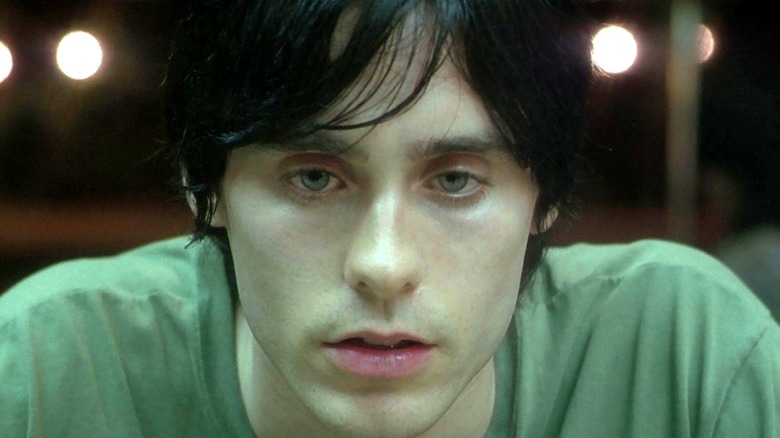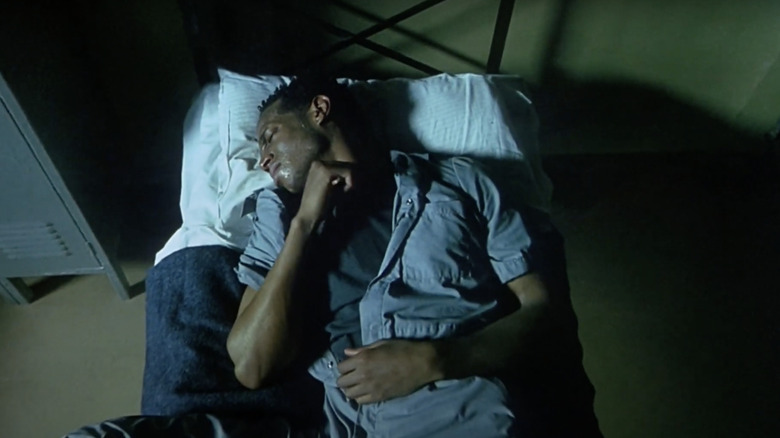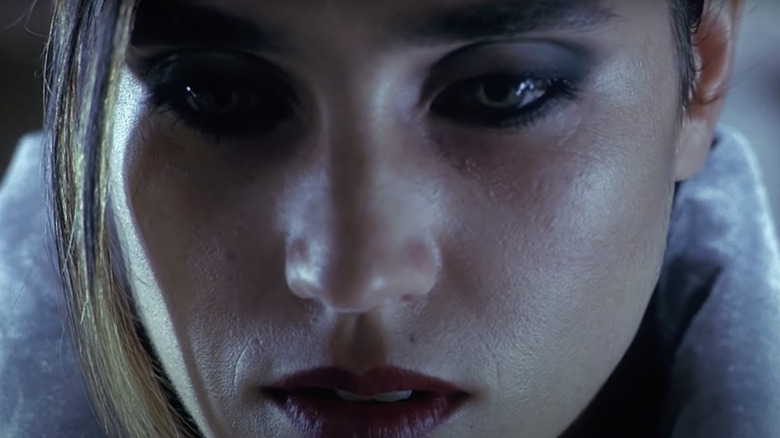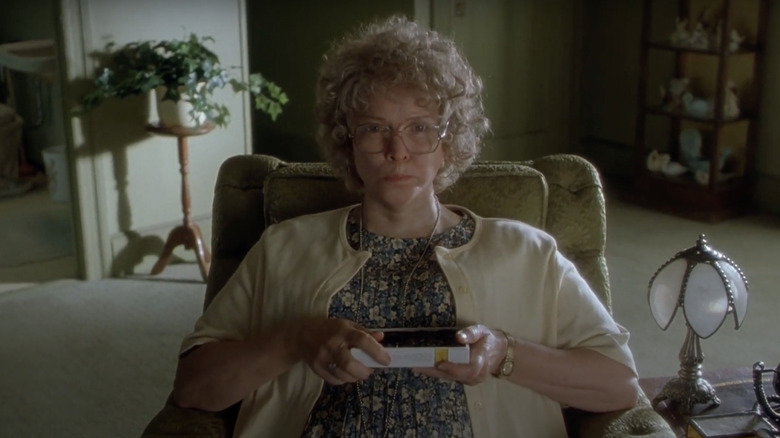The Ending Of Requiem For A Dream Explained
Darren Aronofsky's second feature film, "Requiem for a Dream," premiered in 2000. Since then, the movie has become known as one of the provocative director's greatest achievements, despite some critics at the time calling it "the end of Aronofsky's career," as told by The A.V. Club.
On the surface, the film is often said to be about heroin. But Aronofsky himself told Salon that "'Requiem for a Dream' is not about heroin or [other] drugs." Instead, the film explores the broader themes of addiction and loneliness. The fulfillment that Harry Goldfarb (Jared Leto), Marion Silver (Jennifer Connelly), Tyrone C. Love (Marlon Wayans), and Sara Goldfarb (Ellen Burstyn) are truly seeking is set up early in the film. All of them are seeking a way to fill a void in their lives, and alter their realities to fit the dreams they've made up for themselves in their head.
We may know the heart-wrenching fates of our four heroes, but for a deeper look into what it all means, this is the ending of "Requiem for a Dream" explained.
Harry and Tyrone think they have the best intentions
When "Requiem for a Dream" begins, we're planted smack dab in the middle of a New York summer, a hopeful time for the three younger protagonists. Already dabbling with heroin, Harry and Marion are in a budding relationship, infatuated with each other and making plans for their future. Harry and his friend Tyrone concoct a plan that will move them up in the world of drug dealing, convinced they are doing so with the best intentions.
Obtaining a "pound of pure" and selling it means Harry can help Marion sell her fashion designs, and pay back his mother for all the trouble he's caused. But Harry's addiction has had a hold of him for quite some time. As he once again steals his mother Sara's television set, he ignores the utter fear and pain he's causing her. As a result of his well-intentioned, yet illegal actions, Harry ends up imprisoned and near death, and the loved ones he wanted to help have no chance of visiting him.
Tyrone, on the other hand, seeks the comfort and safety that his mother provided when he was a child. She's gone, and in her place is the safety blanket that heroin provides. For the film's 20th anniversary, Wayans reflected on "Requiem for a Dream" with Vulture.
"Everybody has a deficiency," he said. "Everybody has a deep-seated pain that allows them to seek drugs and artificial elation. At the end of the day, I think [the movie is] about really coping and dealing with what's hurting you ... It was a lesson for me, especially right now in my life after losing my mom. I understand that there's never going to be anything to replace her. The only thing I can seek is a different kind of love, a healthy kind of love."
Marion loses herself
In the same vein as Tyrone, Marion seeks the acceptance she can't find in herself. At first, Harry, who provides both drugs and affection, seems like enough. But as fall and winter descend, so does Marion. While summer was full of great times with Harry, creativity with her designs, money, and hope for the future, by winter, Marion is left alone, addicted, and broke. Willing to do anything for her fix, she gives herself up to a world of prostitution.
There are a number of scenes in which Marion is looking at herself in the mirror, normally before she spirals deeper into her addiction by way of her actions with other men. These moments are symbolic of the internalization of judgment Marion feels from those around her. She mentions her detached parents, and we see the corrupt relationship she has with her therapist, another caretaker who hurts her instead of helping her.
Harry goes to Florida in hopes of scoring more dope, and when Harry is imprisoned, the last bastion of dignity Marion held onto is gone. We last see her curled up with a sack of heroin, having completely lost herself to her drug addiction instead of finding the validation she craves.
Sara Goldfarb wants to feel young again
Sara Goldfarb has the most heartbreaking existence of the four even when summer begins. A widow with a junkie son, Sara's only constant companions are daytime television and her neighborhood acquaintances. She receives a glimmer of hope when she receives a scam call that promises an appearance on TV. Now with something to look forward to, she believes that being on the show and fitting into her old red dress will bring her happiness again. She's reminded of a time when her husband was alive and when she looked youthful. She is filled with the hope that both Harry and a nationwide audience will come around to fill the empty holes in her life with love and acceptance.
Her desires are unattainable, but much like the dress that doesn't fit, Sara refuses to accept this. She's prescribed diet pills (amphetamines) to fit into the dress, dyes her hair to look younger, and gets the best spot in the sun with her friends. But come fall, Sara has fallen into a deep addiction with appetite suppressants while increasingly ignored by everyone around her. Aronofsky points to Sara's addiction as the crux of his argument against "Requiem for a Dream" being labeled a movie simply about drugs. He told Salon he wanted viewers to see Sara's downfall and ask themselves "Oh, my God, what is a drug?"
By winter, Sara has been completely abandoned in a mental hospital, treated callously by everyone. Instead of being surrounded by the people she loves, she only has her dreams to cling to, and as she curls up into a fetal position, she regresses further into herself, forever trapped in her alternate reality.
When speaking to FilmThreat, Aronofsky said that he considers "Requiem for a Dream" a monster movie, explaining that the monster in question "lived inside" the characters' heads.



